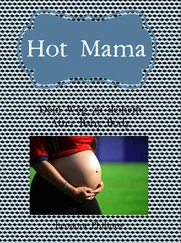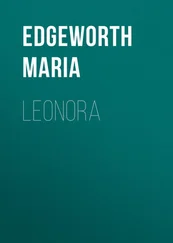The reporter keeps on writing while the others make use of the opportunity and hustle for autographs. Mention is made of Max Ernst and a tall woman, swathed in necklaces, with heels as high as stilts, giving her first lecture on the world of dreams.
Between 1973 and 1975, Leonora paints A Warning to Mother, The Powers of Madame Phoenicia and Grandmother Moorhead’s Aromatic Kitchen . In this last painting she creates a kitchen in Puebla, with its Talavera mosaics, its pots and jars of fired earth hanging on the walls. The cooks hold fans in their hands to blow the hot coals of the stove; they resemble paper kites and the little handmills whirl like tin humming tops. Leonora sets five Mexican women to grind corn, chop vegetables, taste and flavour the soup, and lightly roast chillies on a giant metal rack where a cabbage, a red pepper, cloves of garlic and, of course, numerous ears of corn on the cob await. A huge white goose with the air of a Celtic god is joining the ritual.
‘I am paying tribute to Mary Monica Moorhead. The pestles and mortars, the flat metal trays for cooking the tortillas, have all been an integral part of my life now for many years. I know how to make a good guacamole, my sauces and especially my chocolate mole for chicken are delicious and my rice never sticks. It would give me great pleasure to eat the Archbishop of Canterbury in a mole made with green chile.’
When reference is made to her beauty, Leonora grows irritated: ‘Thank you. The one good thing about old age is that it makes one less sensitive to other people’s personalities.’
In Self-Portrait , Leonora paints herself as a scarecrow, her face covered by a white sheet and a straw hat, intended to scare off the birds. From the barren earth, a crow looks on and waits for her to fall. ‘There is nothing human about me any more,’ she alleges, and when asked why, she replies firmly: ‘Old people like us are not considered as human beings. On the contrary, we’re seen as a bag of rancid, decomposing meat, or a sack of bones that gets dumped in an old people’s home as soon as it begins to look unpleasant. The only thing we are left with is fear and shame at our failing memories, as we repeat the same things to the same people and it grows harder to remember what we have to do, perhaps because our minds turn more and more inwards, looking towards death.’
She devours Lewis Carroll anew: ‘No book has made as great an impression on me as his.’
‘You and he have the same initials: LC,’ and Chiki smiles at her.
‘Yes, even though that’s not his real name. He was christened Charles Dodgson. “But I don’t want to go among mad people,” Alice remarked. “Oh, you can’t help that,” said the Cat: “we’re all mad here.”’
‘And what do you think of your ancestor, Oscar Wilde?’
‘Well, we have our self-portraits in common. He took a fair amount of time to destroy himself, and I was more practical than Dorian Gray: I already painted myself as a phantom.’
THE 1985 EARTHQUAKE EXILES LEONORA once again. Right across the road from her home, the block of flats at number 193 Calle Chihuahua collapses. The flats land stacked one on top of the other, as tightly packed as a mille-feuille pastry. The terrified tenants depart the city altogether, as the Colonia Roma suffers as much if not more than districts in the town centre. Ambulance sirens howl all day long on the 19th September. Dust and smoke are suspended in the air, just like during the air raid on Madrid. There is no light, no water, no television or radio or telephone. Bad news gets transmitted by word of mouth, from one person to the next. ‘The Hotel Regis has fallen down.’ ‘Nothing is left of the Chihuahua building in Tlatelolco but dust.’ ‘Loads of hospitals and maternity clinics have hit the ground.’ ‘More than ten thousand have died.’
Scarcely have communications been restored than Gaby and Pablo phone from the United States.
‘CBS is saying that it’s been the worst tragedy in Mexican history for five hundred years.’
Chiki races to the Calle Tabasco and to Kati’s house. Nothing at all has happened to her.
‘Look, Chiki, the people have organised themselves in an incredible way. It’s those in government who are a complete disgrace.’
‘It’s only when it comes to repression that they know how to act effectively.’
‘In the midst of tragedy popular organisations were forged in Spain.’
‘It would be difficult to envisage Mexico lighting the flame of Socialism, still less of Anarchism. Here the Catholic Church is a repulsive institution. The ecclesiastical hierarchy has never found itself to the left of anyone or anything for as long as I can remember.’
‘Anarchism is the ideology belonging to all the exploited classes and here …’
‘Don’t dream on, Kati. All that’s left to us now is to pass on our libertarian ideals to the next generation. What more can we do?’
‘I can feel my blood boil just thinking about the corruption in the powers that be.’
Chiki is deeply wounded by the sight of the city in ruins. It takes him back to the bombing of Madrid. He recalls Capa shouting in the middle of the street; Chim focusing and shooting off his camera; Gerda taking refuge behind a barricade. In no time at all, beggars have occupied the spaces among the tumbled walls of number 194 on the Calle Chihuahua, and are improvising a roof with plastic sheets and tarpaulin. The ruins fill up with cats and dogs. The ancient Colonia Roma has seen more damaged houses than any other district in Mexico City. Leonora asks herself how people can live there amidst the dust, broken stones and bent girders. Their neighbourhood is changing and Chiki greets the new arrivals. The beggars living across the road from their house enquire: ‘Would you like us to look after your car, boss?’ ‘Señora, may we sweep the road in front of your house?’
Each time Leonora gets on a train or a bus, she takes her unfinished dolls with her and spends the length of the journey decorating, dressing and sewing buttons on to them. Back at the hotel she continues her work, and occasionally she manages to finish one.
‘Do your dolls always accompany you?’ Natalia Zaharías asks her.
‘Yes, to me they are like carpets and I am like the Bedouins who leave with their rugs on their backs and erect their home in the midst of the sand. I bring my dolls with me to feel at home, however far away I may be.’
She returns to the flat overlooking Gramercy Park, and the first thing she does is to go and collect Baskerville from the dog kennels. She races up along Madison Avenue, Park Avenue, Lexington Avenue and Fifth Avenue. Then she walks from Ninth Avenue to Thirtieth without feeling in the least tired. She finds nothing more stimulating than to eat up the streets until suddenly she reaches a road sign and notices she’s just polished off another ten blocks.
Walking takes her back to being a mare again. Sometimes Baskerville gazes up at her with imploring eyes, his tongue hanging out like a thick red ribbon. Come on Baskerville, don’t be so lazy. ‘It’s only because I’m about to drop down dead on the spot with exhaustion,’ the dog replies. Leonora tells him that they’re going to continue until they reach the sea, that they’ll cross the bridge over the Hudson River, and that they’ll salute the Statue of Liberty along the way. Sometimes, without even noticing, she revisits the streets she used to walk with Max without so much as giving him a second thought, not bothering to look out for any of the little cafés where once they met. In any case, wherever she goes, she has to leave Baskerville tied up at the entrance. If she’s invited to a get-together in the evening, she always asks: ‘May I bring my dog? He hates to be by himself and he smokes too many cigarettes waiting for me to call him.’ Some say no, and so Leonora cuts short her visit.
Читать дальше












